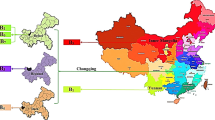Abstract
This study was carried out in order to identify the body measurements of two different Dromedary camel breeds raised in Algeria. The animal material of the study consisted of a total of 115 animals belong to Steppe (n = 55) and Sahraoui (n = 60) camel breeds. Eye and coat colors along with body measurements such as head length, neck length, neck girth, tail length, distance between eyes, distance between ears, body length, withers height, chest girth, and live weight were determined. Least squares means for head length, neck length, neck girth, tail length, distance between eyes, distance between ears, body length, withers height, chest girth, and live weight are found 48.2, 116.9, 65.7, 55.6, 24.1, 22.5, 152.2, 184.5, 141.2 cm, and 217.2 kg for Steppe and 48.1, 101.2, 56.2, 51.2, 23.4, 18.3, 135.6, 167.3, 176.8 cm, and 298.9 kg for Sahraoui camel breeds, respectively. The distribution of brown and black eye colors for the Steppe camel breed is as 58.2% and 41.8%, respectively, while all of the Sahraoui camels studied had a brown eye color. The proportional distribution in terms of body color included are coffee, dark coffee, and red colors for 1.8%, 83.6%, and 14.6% in the Steppe camel and 98.3%, 1.7%, and 0.0% for the Sahraoui camel, respectively. As a result, this study concluded that the withers height and chest girth could estimate the body weight in the two breeds of camels with different ages.


Similar content being viewed by others
Abbreviations
- PV:
-
Live weight
- CT:
-
Thoracic circumference
- CA:
-
Abdominal circumference
- HG:
-
Height at withers
- WH:
-
Withers height
- BL:
-
Body length
- CG:
-
Chest girth
- NL:
-
Neck length
- NG:
-
Neck girth
- TL:
-
Tail length
- HL:
-
Head length
- DBE:
-
Distance between eyes
- DBEAR:
-
Distance between ears
References
Adamou, A., 2008. L’élevage camelin en Algérie : Système à rotation lente et problème de reproduction, profils hormonaux chez la chamelle Chaabi. Thèse de Doctorat université Badji Mokhtar- ANNABA 247 p.
Adnane, S.J., Zohir, FJ., 1990. Dromadaire: caractéristique et physiologie, université de Baghdad PP : 208.
Anderson, S., 2003. Animal genetic resources and sustainable livelihoods. Ecological Economics. 45 :331–339.
Arif, M., Regab, S., 1995.Contribution à l’étude des systémes d’élevages: camelins,ovins et caprins dans leurs milieu naturel (Sahara Septentrional) thése.ing. INFSA/AS.Ouargla 1995,P75.
Ayad, S., Herkat, A., 1996. Contraintes de développement de l’élevage camelinen Algérie ; cas de la wilaya d’El Oued, Thèse ingéniorat en sciences Agronomiques, INA El- Harrach Alger. 40 P.
Babelhadj, B., Adamou, A., Tekkouk-Zemmouchi, F., Benaissa, A., Guintard, C., 2016. Etude biométrique de dromadaires de 2 populations algériennes : la Saharaoui et la targui (camelus dromedarius,L.). Live stock Research for Rural Development 28(2) 2016.
Bessahraoui, C., Kerrache, A., 1998. Etude socio-économique relative à l’élevage camelin dans la région du Hoggar (Algérie). Thèse ingenerate en sciences Agronomiques IHAS Ouargla. 99,100,101 P.
Bouregba, C., Lounis, M., 1992. Contribution à l'étude des systèmes d'élevages et les caractères de production des races camelines dans le Sahara septentrional. Thèse ing. Agro. Sah. INFS/AS Ouargla, P : 80.
Centre des recherches et des études du dromadaire 1989. LIBYE
Chehma, A., B Faye., M R Djebbar., 2008. Productivité fourragère et capacité de charge des parcours camelins du Sahara septentrional algérien", Sécheresse 19(2):115–121.
F.A.O., 2007. Organisation des Nations Unies pour l’Alimentation et l’Agriculture,« faostat.fao.org».
FAO., 2012a. Mise en place de cadre institutionnel pour la gestion des ressources zoogenetique.
FAO., 2012b. Réalisation d’enquête et de suivi pour les ressources zoogenetique.
Faye, B., 2002. Le dromadaire pédagogique, collection les savoirs partagés © Cirad,1ere Edition .37 P.
Field, C.R., 1980. Cité par RICHARD-D., 1985 .le dromadaire et son élevage I.E.M.V.T.France .161P.
M.A.D.R., 2013. statistiques agricoles , ministère de l’agriculture et de développement rural
Mati, A., Senoussi-Ghezali, C., Si Ahmed Zennia, S., Almi-Sebbane, D., El-Hatmi, H., & Girardet, J., M. 2017. Dromedary camel milk proteins, a source of peptides having biological activities – A review. International Dairy Journal. https://doi.org/10.1016/j.idairyj.2016.12.001.
Meffe, G.K., Carole, C.R., 1994.Principle of conservation biology
Mendelson, R., 2003. The challenge of conserving indigenous domesticated animals. Ecological Economics, p 501-510.
Narjisse, H., 1989. Nutrition et production laitière chez les dromadaires. Options Méditerranéennes -Série Séminaires. 2 : 163–166.
Rechard, D., 1985.Le dromadaire et son élevage. Institut d’élevage et de Médecine vétérinaire des pays tropicaux.56,61,80,89P. Revue d’élevage et Médecine vétérinaire des Pays tropicaux :p3.
SAS, 1999. The SAS System SAS Institute Inc., Cary, NC, USA,Version 8 Copyright © 1999.
Yilmaz, O., Cemal, İ., Karaca, O., 2013 . Estimation of mature live weight using some body measurements in Karya sheep. Tropical Animal Health and Production, 45,397–403.
Author information
Authors and Affiliations
Corresponding author
Ethics declarations
Conflict of interest
The authors declare that the research was conducted in the absence of any commercial or financial relationships that could be construed as a potential conflict of interest.
Additional information
This article belongs to the Topical Collection: Camelids
Guest Editor: Bernard Faye
Publisher’s note
Springer Nature remains neutral with regard to jurisdictional claims in published maps and institutional affiliations.
Rights and permissions
About this article
Cite this article
Meghelli, I., Kaouadji, Z., Yilmaz, O. et al. Morphometric characterization and estimating body weight of two Algerian camel breeds using morphometric measurements. Trop Anim Health Prod 52, 2505–2512 (2020). https://doi.org/10.1007/s11250-020-02204-x
Received:
Accepted:
Published:
Issue Date:
DOI: https://doi.org/10.1007/s11250-020-02204-x




